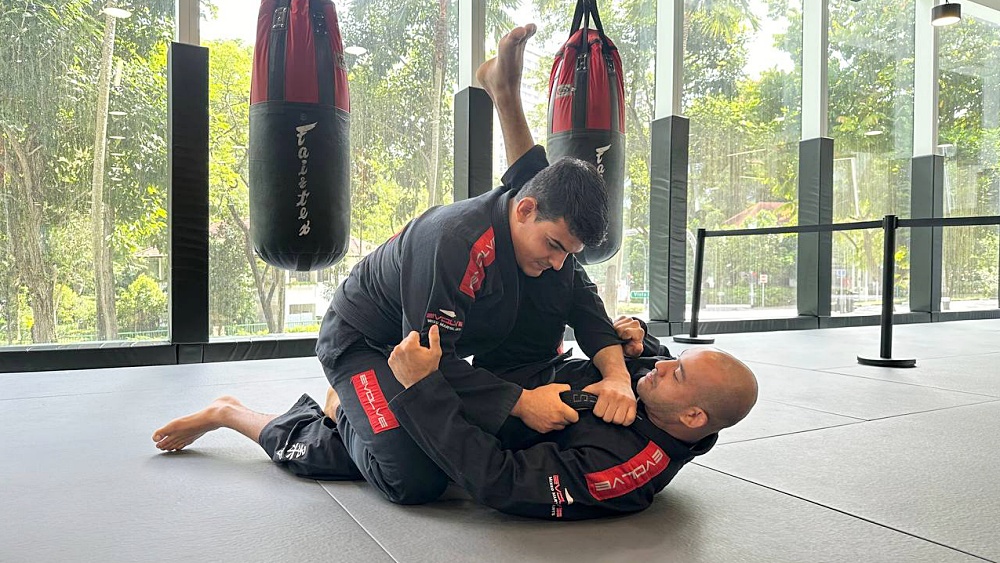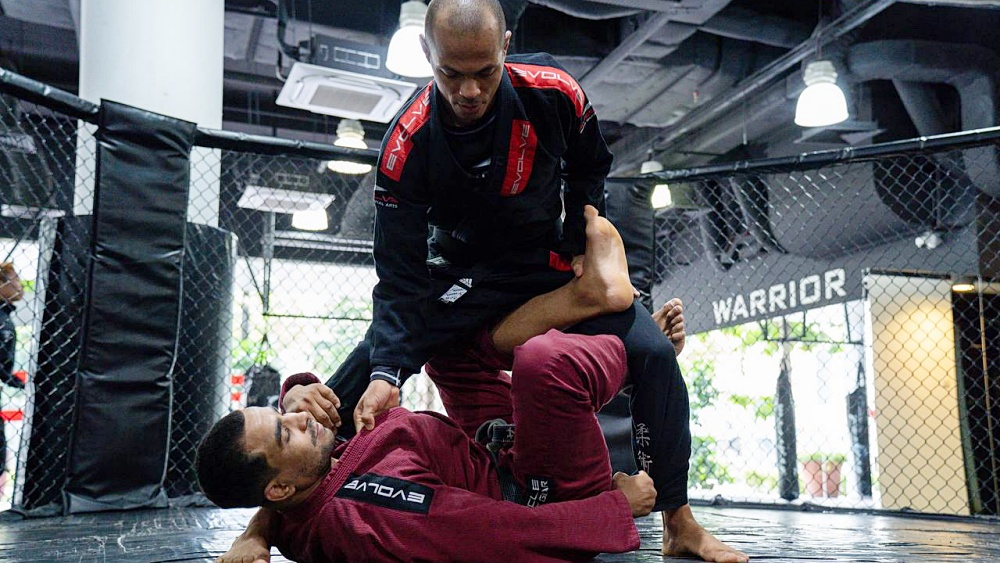In Brazilian Jiu-Jitsu, you must isolate the limb you are attacking to submit an opponent effectively. The same can be said when passing the guard. Typically, to pass the guard, a grappler must be able to get through or pin the opponent’s legs before moving to a dominant position to secure the pass. While pinning the opponent’s legs as they actively defend is not a simple task, it is one of your best bets to ensure a successful pass, especially in highly competitive environments. In this article, we will talk about the leg staple pass in Brazilian Jiu-Jitsu.
What Is The Leg Staple Pass?
As John Danaher said, a grappler’s first responsibility in the bottom position is to keep their legs between them and the opponent to refrain from passing. This gives importance to the primary goal when playing its counterpart – the guard pass. In passing the guard, your initial goal is to eliminate the opponent’s first line of defense, their legs. Getting past the opponent’s guard typically allows you to advance to a dominant position like side control or mount.
As a beginner, you probably studied the knee cut to pass after opening your training partner’s closed guard. The leg staple pass is quite the opposite of the knee cut pass. Also known as the same-side knee drive pass, assuming that you are passing on the opponent’s left side, in a knee cut pass, you will use your right leg to pin and slice across the opponent’s leg to go to side control. In a leg staple pass, you use your same side leg (left leg) to staple the opponent’s leg to the mat. As you staple their leg, you use your right leg to post out wide on the right for a wider base. This allows you to control both sides of their hips as you trap the opponent’s far leg between your armpit and right leg.
While there are different ways to finish the leg staple pass, the most common of which is backstepping your opposite leg and weight to side control. Suppose you are a beginner looking for a pass to add to your arsenal; the leg staple pass is an excellent addition to your toolbox as it is performed from the combat base – a fundamental position you end up in after opening the closed guard.
How To Perform The Leg Staple Pass
As the leg staple pass is done after opening the closed guard, keep in mind to always maintain your posture and spread your weight evenly on the mat to prevent the opponent from breaking your position and balance, which they can use to execute sweeps or apply submissions. Maintain a solid combat base once the opponent’s closed guard is opened. If you are passing on your right side, use your right hand to grab and push on the inside of their knee for control.
Squat down to prevent the opponent from outbalancing you, and use your left hand to scoop their right leg and place it between your shoulder and neck. This puts you in the L position. Grab their collar with your left hand to control the opponent’s right leg. While maintaining the grip on their collar, bring your right knee up and drop it across the opponent’s left leg to staple it on the mat. Note that it will be challenging for you to advance forward from this position because the opponent’s right hamstring is blocking your upper body, so the best route is to pass to the sides.
While controlling their right leg, use your right hand to scoop their neck. To reach the opponent’s neck on your right side, drop their right leg from your shoulder to your left bicep. Reach behind their neck using your right hand and secure a crossface to secure the shoulder pressure pinning their head. This puts you in a cradle-like position in wrestling, though you are on the opposite side and your body is in front of the opponent.
Use your left leg to backstep on the right side as you drop all your weight on the opponent. Use your left hand to grab their right leg to block their hip and move it to secure the side control pin. Another important detail is if you are initiating the pass from the open guard instead of after opening the closed guard. If both the opponent’s feet are on your hips, grab and control the inside of their knees. Push one knee down on the side you wanted to pass and scoop their top leg to land in the L position.
Standing Leg Staple Variant
Likewise, you can make this pass more dynamic when standing. When standing pass on your right side, you can fake the pass by moving your body to your left side while controlling the opponent’s right leg. As soon as they frame on your left hip, move back to the original staple pass L position. The opponent may push your right knee as you proceed with the staple pass. As they do, you can throw their right leg over from your left shoulder and pass on your left side to land in side control.
Understand that the leg staple pass focuses on one side. To make your game more dynamic, you can mix it with your other passing techniques and move to the opposite side if the opponent successfully defends your initial pass attempt. Remember that your passing game should be dynamic as you face more experienced opponents. This means that if your first attempt to pass on a side fails, you can go the other way, and vice versa.
Conclusion
Controlling the opponent’s legs is critical in passing the guard. It makes a world difference because in order to secure the pass, you must first bypass their frames. As evident in the starting positions of guard passes, the initial connection starts by controlling the legs. See how the staple pass fits your passing style and incorporate it with your other guard passing techniques.
You may also like:
















